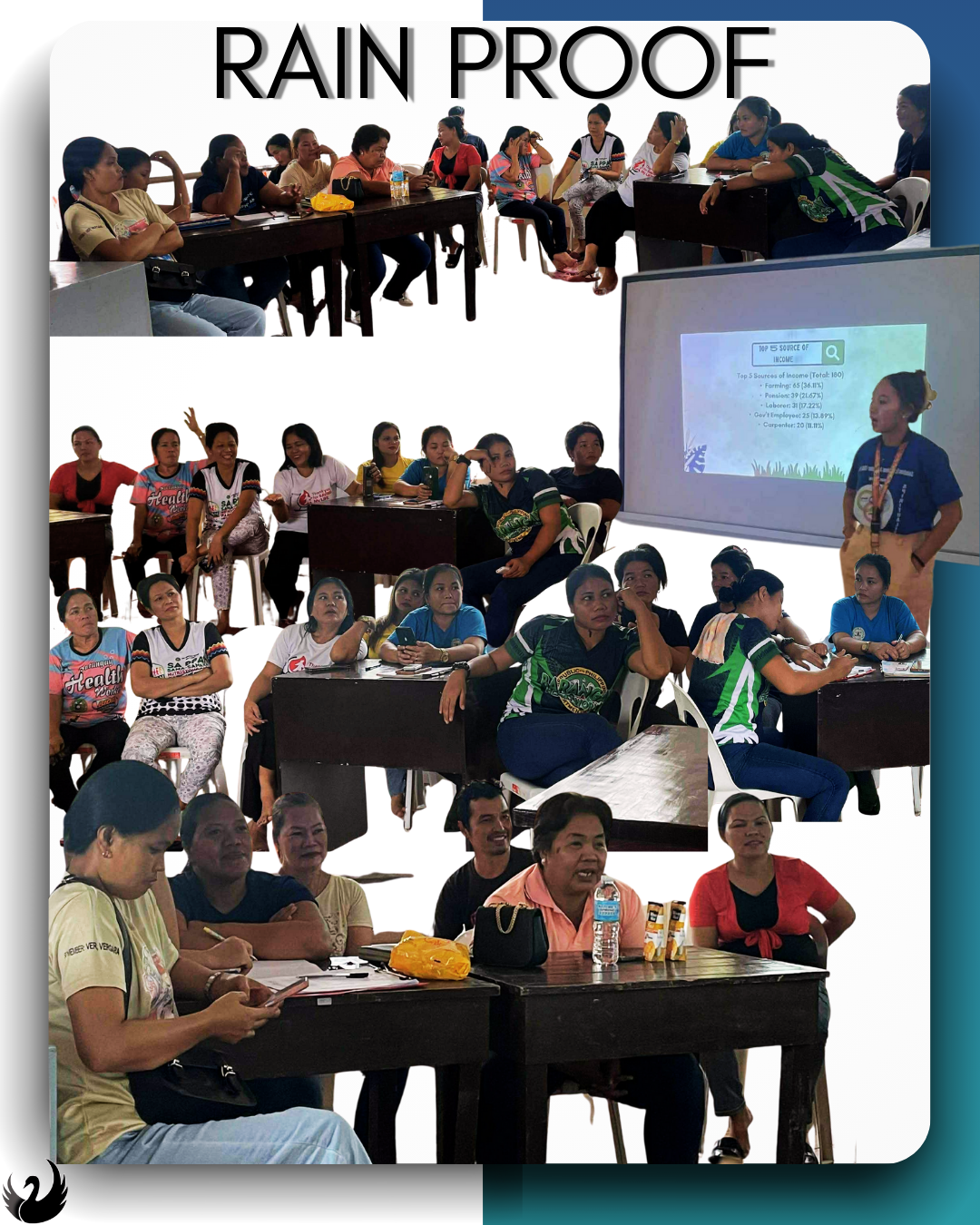Despite the heavy rains, 21 determined participants from Barangay Tag-Oyango gathered under one roof for a Participatory Rural Appraisal (PRA) validation session, facilitated by the SEA Sibagat Team. The downpour could have dampened spirits, but instead, it became a backdrop for resilience and commitment.
“Even if the rain is strong, we still came,” one participant said with a smile, shaking off droplets from their umbrella. “This is for our community’s future.”
Community as Experts
The session put the community in the driver’s seat—residents weren’t just respondents; they were the fact-checkers and knowledge keepers. Together, they reviewed and corrected key baseline data to make sure that development plans truly reflected their lived realities.
Bananas and coconuts were affirmed as the primary crops, a detail crucial to agricultural planning. Elders aged 60 and above were recounted at 85—up from the earlier 78—a correction that will better inform support for senior citizens. And just as important, three households relying on Tasok as their main water source were identified, a detail that could shape future water access solutions.
As one elder remarked:
“Numbers may look small, but behind each one is a family, a story, a need. That’s why it’s important we check.”
Beyond Data—Toward Ownership
Unlike top-down surveys where outsiders dictate the findings, PRA flips the script. Facilitators become enablers, while residents themselves analyze and validate the data. This way, people don’t just contribute information—they take ownership of it.
A youth volunteer put it best:
“Before, I thought planning was only for leaders. Now I see, we all have a role. If we don’t correct the data, how will the projects really serve us?”
Governance in Action
The validation session wasn’t just about accuracy—it was a practice of good governance in its most grounded form. Transparent, accountable, and community-driven. When people take responsibility for the information that guides development, decisions become more trustworthy and responsive.
Barangay Captain Mario noted:
“What makes this process powerful is that it’s ours. We saw the errors, and we corrected them together. This is how real development starts.”
Stewardship in the Rain
By the end of the day, the rain outside had slowed, but inside the covered hall, something had already taken root: a shared sense of stewardship. The SEA Sibagat Team may have facilitated the process, but it was the community’s diligence, voices, and corrections that transformed the exercise into something meaningful.
This wasn’t just data validation. It was proof that when residents themselves hold the pen, the story of development becomes more authentic, accurate, and accountable—rain or shine.





Leave a Reply